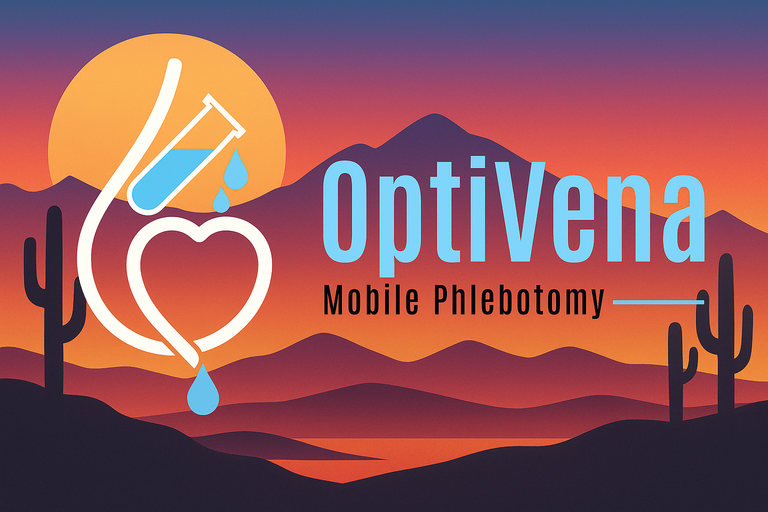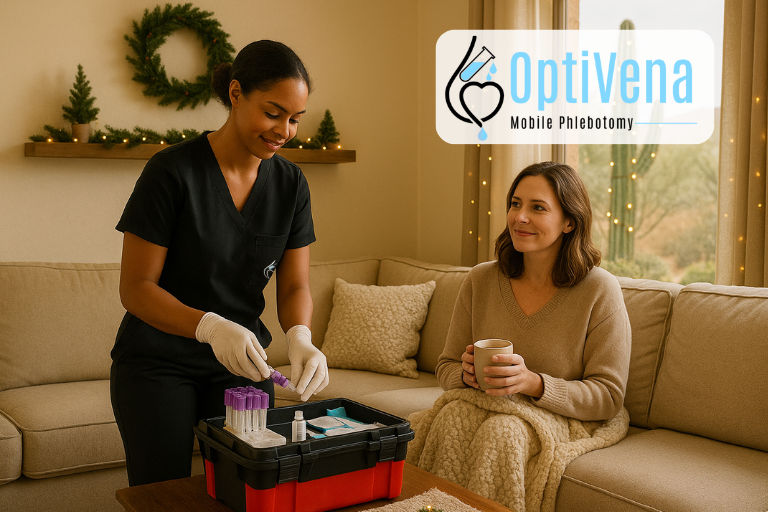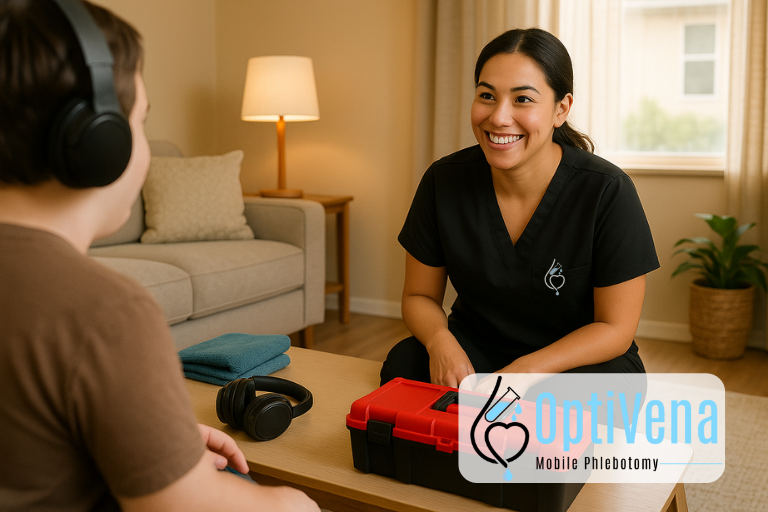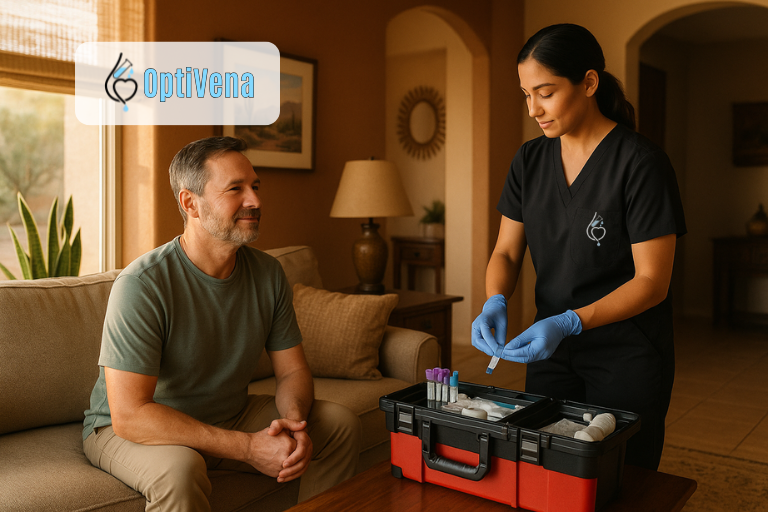Therapeutic Phlebotomy for Porphyria Cutanea Tarda Treatment: Managing Iron to Protect Your Skin

Porphyria Cutanea Tarda (PCT) may sound rare, but for those who live with it, the condition can be life-altering. Characterized by fragile skin, painful blisters, and extreme sensitivity to sunlight, PCT is directly linked to excess iron in the body. For many patients, therapeutic phlebotomy — the regular removal of blood — is the most effective treatment. Understanding why phlebotomy works and how mobile services can help is key for anyone managing this condition.
What Is Porphyria Cutanea Tarda?
Porphyria Cutanea Tarda is the most common form of porphyria, a group of disorders caused by problems with the body’s ability to make heme — a component of hemoglobin in red blood cells. In PCT, excess iron interferes with enzymes needed for heme production. The result: a buildup of porphyrins, which are highly sensitive to light.
When porphyrins accumulate in the skin, exposure to sunlight can trigger blisters, scarring, and long-term skin damage. Even simple activities like gardening or walking outside can become painful.
The Role of Iron in PCT
Excess iron is a major driver of PCT. Patients often have higher-than-normal iron levels due to genetics, alcohol use, hepatitis C, or other underlying factors. This iron buildup disrupts enzyme function and accelerates porphyrin accumulation. The more porphyrins in the body, the more sensitive the skin becomes to light.
That’s why therapeutic phlebotomy — essentially lowering the body’s iron stores — is such an effective treatment. By removing blood, iron levels drop, enzyme activity improves, and porphyrin levels decrease.
How Therapeutic Phlebotomy Helps
Therapeutic phlebotomy for PCT involves drawing a set amount of blood on a regular schedule, usually every one to two weeks at the start of treatment. Over time, this lowers ferritin (a measure of stored iron) to safer levels. Patients often notice improvements in their skin and a reduction in painful flare-ups once porphyrin levels fall.
While phlebotomy doesn’t cure PCT, it’s one of the most reliable ways to manage symptoms long-term. Other treatments, such as medications, exist but are often less effective or carry additional risks.
Challenges Patients Face
For many patients, the hardest part of PCT treatment isn’t the phlebotomy itself — it’s accessing care. Traditional labs and clinics may not prioritize therapeutic draws. Appointments can be infrequent, facilities may not accept self-pay patients or charge high prices, and travel can be stressful for those with fragile skin. The thought of waiting in a crowded lobby under fluorescent lights is the last thing most PCT patients want.
Why Mobile Phlebotomy Matters
Mobile therapeutic phlebotomy changes the equation. Instead of patients traveling to a clinic, skilled phlebotomists come directly to the patient’s home. This makes treatment more comfortable, more private, and more consistent. At OptiVena Mobile Phlebotomy, we:
✅ Perform therapeutic phlebotomy safely in-home with professional equipment.
✅ Follow physician-ordered schedules, whether weekly, biweekly, or longer.
✅ Provide self-pay options for patients who struggle to access treatment elsewhere.
✅ Focus on patient comfort, minimizing stress and maximizing safety.
For conditions like PCT, consistency is key. Skipping or delaying phlebotomy sessions allows iron levels to rise again, undoing progress and increasing the risk of painful flare-ups. Mobile services help patients stick to their treatment plan.
Lifestyle Tips for PCT Patients
While phlebotomy is the cornerstone of treatment, lifestyle adjustments can also help:
✔︎ Sun Protection: Wearing protective clothing, wide-brimmed hats, and using UV-blocking films indoors can reduce skin damage.
✔︎ Limit Alcohol: Alcohol increases iron absorption and liver stress, making symptoms worse.
✔︎ Monitor Medications: Some drugs may increase porphyrin buildup; patients should review prescriptions with their doctor.
✔︎ Regular Lab Monitoring: Blood work to track ferritin, liver enzymes, and porphyrins is crucial for safe management.
The Bigger Picture
Though PCT is considered rare, awareness is growing. Early recognition and proper treatment can significantly improve quality of life. Many patients report that regular therapeutic phlebotomy allows them to live more normally, spending less time recovering from flare-ups and more time doing what they enjoy.
By combining consistent treatment with preventive habits, patients can reduce the impact of PCT and protect their skin for the future.
Takeaway
Porphyria Cutanea Tarda can make everyday life painful, but therapeutic phlebotomy offers real relief by lowering iron levels and reducing porphyrin buildup. The challenge for many patients isn’t the treatment itself but access to it. That’s where OptiVena Mobile Phlebotomy comes in. We service the entire Phoenix valley, including Gilbert, Chandler, Queen Creek, San Tan Valley, Scottsdale, Phoenix, Buckeye and everywhere in between. We provide safe, professional in-home phlebotomy so patients can manage PCT without the stress of traditional lab visits.
Lab work, simplified. Care, delivered.






